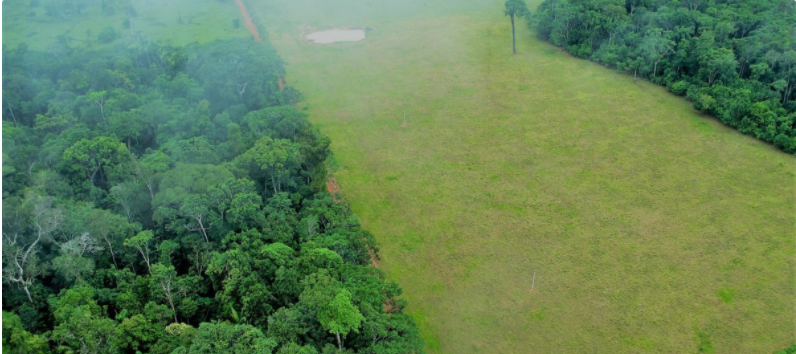How Deforestation Affects Climate Change
October 16, 2020
Forests, rainforests, and other lush ecosystems are home to thousands of species of plants and animals and are essential to human lives. They provide us with food, medicine, and other essential things. Unfortunately, they are being destroyed at an alarming rate.
According to the Climate Institute at climate.org 46-58 thousand square miles are destroyed every year for construction and destruction of our planet. One of the most common forms of destruction to our forests is agriculture. The most common form of agricultural deforestation is called “slash-and-burn,” which is the mass cutting and burning of trees and other plants. While this process has proved to be successful in small quantities and can also have positive effects on the soil, it can eventually set off a large ranged fire. This then causes overexposed soil that can lead to more fires and leaves heavy amounts of smoke in the forest that prevents rainfall. This form of destruction destroys around 50 acres of land an hour all around the world.
In the Amazon Rainforest, the use of slash-and-burn clearing techniques poses a risk for long-term outcomes. In the Amazon Rainforest, there are considered to be two seasons: dry and wet. Unfortunately, agricultural farmers surrounding this area will attempt to use this method to gain more land. While it helps them short-term with making the soil more fertile, it promotes long-term negative effects. This includes fewer habitats and ecosystems for all of the plants and animals in the area, pushing them further towards extinction.
Another popular form of deforestation is logging or the destruction of a forest for paper products. While the companies doing this work try to help or give back to the ecosystem by replanting the trees they destroyed, they are most likely only planting one type of tree. This does not bring back any of the habitats they destroyed or the other plants that grew in that area.
The last form of deforestation that can be the most destructive and most common to occur is the urban sprawl or the development of housing. While to people this is crucial, this form of destruction is driven by overpopulation. A solution to this problem has been created by environmentalists and architects together to make the concept of tiny cities constructed of just housing. This helps both sides with using up less land while also continuing to build houses.While burning biomass can sometimes have a positive effect it has also brought up many effects on climate change. It has been proven by NASA that 90% of biomass burned is because of humans while only 10% is from natural causes. Because these fires produce massive amounts of carbon dioxide, a major component of our greenhouse gases, it is having a long-term effect on our atmosphere. When trees and forests are growing they store large amounts of carbon dioxide that they use and emit through photosynthesis, so when these forests are burned on a large scale in a short amount of time,all of that carbon dioxide is released into the atmosphere. The Climate Institute states that 25% of the world’s greenhouse gases come from deforestation alone.
Other effects that deforestation has on our environment are the changing of the water cycle, loss of biodiversity, and soil erosion. While in some cases it is shown that deforestation is essential to human life, there are better,safer solutions that have a better outcome that can be used to help save the biodiversity of this planet.



